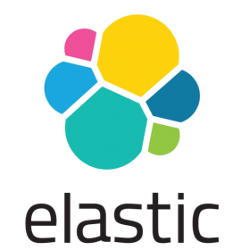ElasticSearch Tutorials
In this detailed Resource page, we feature an abundance of ElasticSearch Tutorials!
Elasticsearch is a search engine based on Lucene. It provides a distributed, multitenant-capable full-text search engine with an HTTP web interface and schema-free JSON documents. Elasticsearch is developed in Java and is released as open source under the terms of the Apache License. Official clients are available in Java, .NET (C#), PHP, Python, Apache Groovy, Ruby and many other languages. According to the DB-Engines ranking, Elasticsearch is the most popular enterprise search engine followed by Apache Solr, also based on Lucene.
Elasticsearch is developed alongside a data-collection and log-parsing engine called Logstash, and an analytics and visualisation platform called Kibana. The three products are designed for use as an integrated solution, referred to as the “Elastic Stack” (formerly the “ELK stack”).
Elasticsearch can be used to search all kinds of documents. It provides scalable search, has near real-time search, and supports multitenancy. “Elasticsearch is distributed, which means that indices can be divided into shards and each shard can have zero or more replicas. Each node hosts one or more shards, and acts as a coordinator to delegate operations to the correct shard(s). Rebalancing and routing are done automatically”. Related data is often stored in the same index, which consists of one or more primary shards, and zero or more replica shards. Once an index has been created, the number of primary shards cannot be changed.
Elasticsearch uses Lucene and tries to make all its features available through the JSON and Java API. It supports facetting and percolating, which can be useful for notifying if new documents match for registered queries.
Another feature is called “gateway” and handles the long-term persistence of the index; for example, an index can be recovered from the gateway in the event of a server crash. Elasticsearch supports real-time GET requests, which makes it suitable as a NoSQL datastore, but it lacks distributed transactions.
If you wish to build up your ElasticSearch knowledge first, check out our ElasticSearch Tutorial for Beginners.
ElasticSearch Tutorials – Getting Started
Simple examples based on the ElasticSearch
- Elasticsearch Tutorial for Java Developers
Elasticsearch is a search engine based on Lucene. It provides a distributed, multitenant-capable full-text search engine with an HTTP web interface and schema-free JSON documents. Elasticsearch is developed in Java and is released as open source under the terms of the Apache License. Elasticsearch is the most popular enterprise search engine followed by Apache Solr, also based on Lucene. - Elasticsearch for Java Developers: Introduction
Effective, fast and accurate search functionality is an integral part of vast majority of the modern applications and software platforms. Either you are running a small e-commerce web site and need to offer your customers a search over product catalogs, or you are a service provider and need to expose an API to let the developers filter over users and companies, or you are building any kind of messaging application where finding a conversation in the history is a must-have feature from day one. - Elasticsearch for Java Developers: Elasticsearch from the command line
In this section we are jumping right into the battle and going to apply our knowledge in practice. Along this section curl and/or http would be the only tools we are going to use to make friends with Elasticsearch. - Elasticsearch for Java Developers: Elasticsearch from Java
Along this part of the tutorial we are going learn how to talk to Elasticsearch by means of native Java APIs. Our approach to that would be to code and to work on a couple of Java applications, using Apache Maven for build management, terrific Spring Framework for dependency wiring and inversion of control, and awesome JUnit / AssertJ as test scaffolding. - Elasticsearch for Java Developers: Elasticsearch Ecosystem
In this last part of the tutorial we are going to look around and learn how perfectly Elasticsearch fits into Java ecosystem and inspires many interesting projects. One of the best ways to illustrate that is to take a look at the marriage of Elasticsearch and Hibernate framework, an exceptionally beloved choice among Java developers for managing the persistence layer.
ElasticSearch Tutorials – Integrations
Learn how to use ElasticSearch with other databases
- Spring Data Elasticsearch Example
In this article, we will see how we can use spring-data-elasticsearch module which integrates spring-data and elasticsearch. - MongoDB Elasticsearch Tutorial
By design, MongoDB is meant for storing and retrieving data where as Elasticsearch, built on Lucene, is meant for search. Though MongoDB has text search feature, it is recommended to use MongoDB for general application use and complement it with Elasticsearch when you need rich full text searching.
[undereg]


